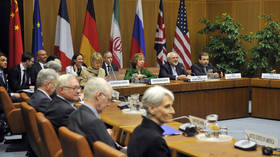Race issues in NYC – Blacks vs. Hispanics
A string of attacks on Hispanic residents in New York has prompted fears of a new wave of racial hatred.
The city that has historically been “a melting pot for immigrants” seems to be reaching boiling point in terms of radical sentiments.
The United States has always been a country of immigrants seeking a better life but they are not always welcome. The western state of Arizona recently passed a tough law targeting undocumented Mexican immigrants.
Despite a backlash, there are now more signs that this sentiment has spread across the country far from the Mexican border – in one area of New York City there has been a string of a dozen attacks on Hispanic residents in recent months.
“Unfortunately most of the attacks most recently have been by blacks against Mexicans,” acknowledged Edward C. Josey, the President of the National Association for Advancement of Colored People.
According to these victims, they were targeted by teens while they were minding their own business, for no other reason than being Mexican.
There appears to be a divide between the minorities sharing poor areas of New York.
“You go through the statistics on education and crime who’ve been at the bottom the blacks and Hispanics been at the bottoms, therefore we have more in common than we don’t have in common,” the NAACP President said.
The rift appears to be growing with the influx of Hispanic immigrants, city blocks that used to be vacant are now flourishing, appearing to leave some behind.
“You seen a lot of Mexicans working and no blacks working here,” Josey said.
Indeed, many of the Mexican shops and markets have popped up in the city where many of the anti-Mexican attacks have occurred, resulting in constant police presence – a feature which is new, although residents saying the underlying issues are not. “This has happened for years and years and years,” says one shopkeeper.
Some argue the problem has been exaggerated and now, it is the Blacks who feel slighted and unfairly targeted by all the attention. They feel Mexicans share in the blame too.
The Black community believes many Mexicans are not legally in the country and they commit crimes.
It is an argument being made all the way from the tucked-away New York town to the streets in Arizona. So in a country of immigrants, does this point to a pecking order that has always been?
The NAACP President admits that “It’s the way it’s always been new arrivals always have a difficult period to go through.”
Mexicans, in turn, draw a parallel between the Whites and the Blacks, when the Whites used to think they were superior to Blacks, and now the Blacks think they are superior to Mexicans.
In the same town that used to be a melting pot, one resident says, “We [Blacks and Mexicans] live together, but cannot stay together.”
James Early from the Center for Folklife Programs and Cultural Studies argued that there is less of a deed racial divide and more of a systemic problem stemming from antagonism and economic conditions.
“We have the competition for space; a competition for identity, for psychological stability and it gets expressed in violence. But to suggest that it is simply a manner of expression between these two communities is to miss the larger systemic issue; of why these forced economic migrations and why the historically and continuing depressed economic and living circumstances of African Americans that produce this violence,” said Early.
Immigration activist Ron Gochez agreed, saying the problem is a result of poor economic and education conditions.
“We have to educate our communities and educate our youth and let them know, look, we have a lot more in common than we do, than anything else, so we have to get along and struggle on together because we are in the same situation and only together can we get out of it,” said Gochez.
Early agreed, “Logic would suggest that we should be collaborating against the larger issues that are restraining our communities and setting the context for these antagonisms between us.”
He further argued that education is an important aspect to address. He said that new immigrants do not understand the African American community or their history in America, similarly the African American community does not understand the Latino immigrant community and why they are coming to the United States. Instead both are fueled by misinformation.
“We have to be very careful of the ignorance that pervades this country in both the African American community and the Latino community and to hold our educational system and our leaders responsible,” said Early.
Gochez agreed, arguing that both the education system and the media are spreading misleading information about both African Americans and Latinos, leading to conflict.
Both agreed that African Americans and Latinos are not enemies.
“If the communities united and worked together, we could be a potential force,” said Gochez.












